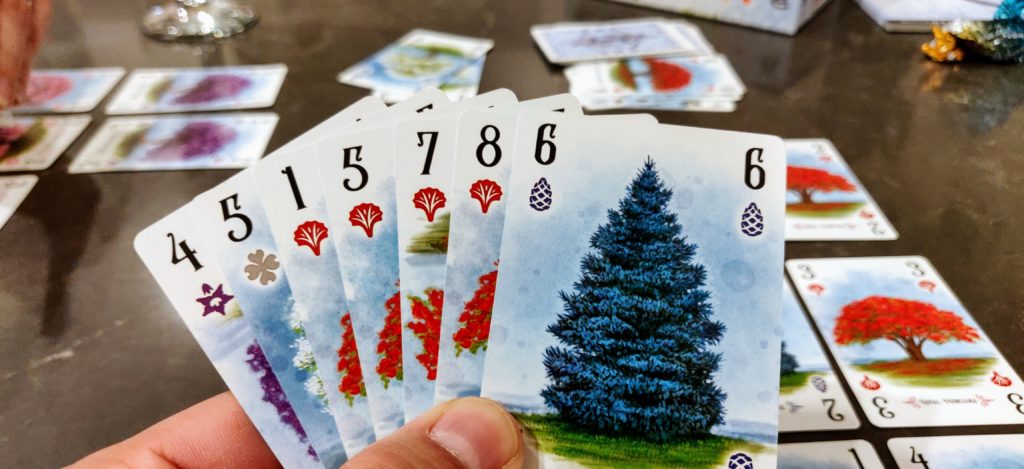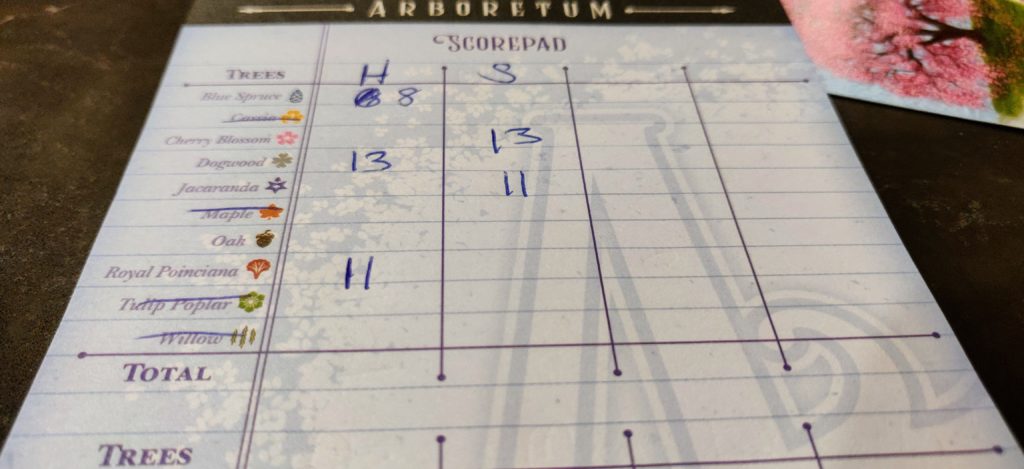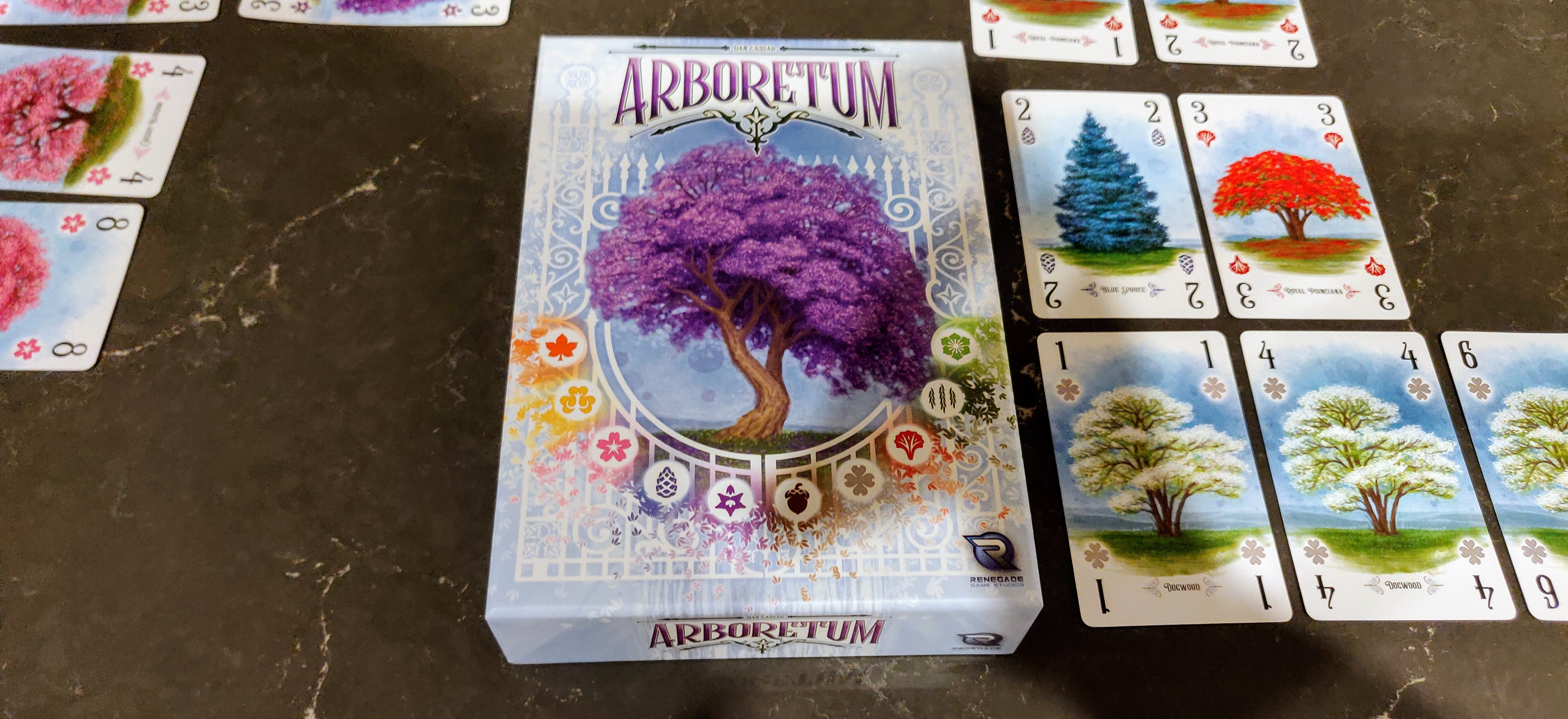The mark of good board game art is how often you find yourself distracted during a game by the artwork. When you find yourself captivated by the intricate work of the brush, shade and pattern and colour combining; when the art beguiles such that you forget that it is your turn; when that clever strategy you had devised falls straight from your brain; all taken by the wayside because beauty.
So, Arboretum.
I confess disappointment, at first.

When it comes to board games, I love components. Wooden farmers, plastic trains, little animal pieces, cleverly interlocking cardboard. So when I open a much-hyped board game and find only cards, I admit to being somewhat disappointed.
I should already know better, of course. Some of my most favourite games are but bare cardboard. I should know that companies can produce ingenuous games time and time again with black and white on cardboard stock. That this is, after all, my world of cardboard.
Sometimes the problem is me.
The artist, Beth Sobel, deserves every penny because I might well have walked past this game if not for the art. Ultimately, this game didn’t need any of that to win me over. This game is both simple, yet deceptively complex. And beautiful. So, so beautiful.
So, Arboretum.

An arboretum is a tree farm. One might walk through one, appreciating the lofty woodland beauty, and the intricate detail in the created world. A more astute observer would note species and varieties. The steadfastness of oak. The incandescent purple bloom on a Jacarandah. The dogwood, delicately frosted with countless white flowers.
This game might seem abstract, but it seems to capture the thematic strategy of a tree farm. A cherry blossom enthusiast might wander the trees but their path starts and ends with cherry blossom in it’s prime. If you can build for them a path exclusively of cherry blossom trees however, of course that should be worth double. Even the numbers make sense for anyone who’s traversed a tourist destination: you look for the little numbers, match them to your map, and know you’re making your way to the end.
So in this game, you build your little tree farm, placing trees in an orderly, orthogonal fashion. Draw two cards into your hand–either from the deck or a discard pile. Place one card, and discard another.
Rinse and repeat.

Two subtleties bring the game to life. One: each player has their own discard pile. Two: only one person can score each variety of tree, and it is the person who holds the highest value sum of cards of that variety in their hand. I like to think of it as your advertising budget. When the tree enthusiasts come to town, they only have time to visit the most prominent maple farm in town. Truth in advertising, as they say.
That means every card placement is a difficult decision. Do you place another card of that suit to get more point, or keep it to ensure you can score it? And if another player is building a sizable collection of willow trees, you could always stockpile willow trees in your hand and prevent their payday. So you have a great capacity to block the other players. But given you can only hold seven cards in hand, the more cards you hold to block other players, the more restricted you are in subsequent turns.

So, Arboretum.
This game is a devious and brutal game hiding behind delightful, delectable artwork.
Arboretum, by Dan Cassar. Currently reprinted by Renegade Games. 2-4 players, < 30 minutes.
